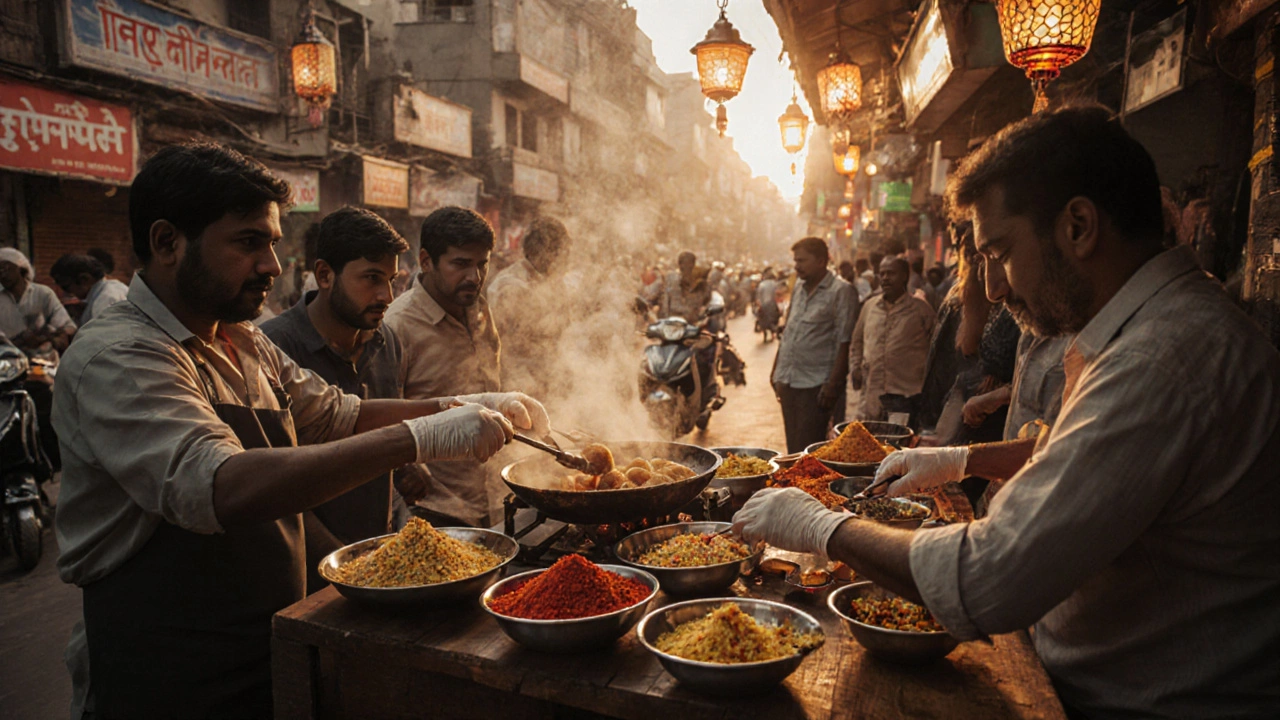Travel Food Tips India: Eat Safe, Eat Smart Across the Country
When you're traveling in India, a country where food is culture, religion, and daily ritual. Also known as the land of spices and street eats, it offers some of the most unforgettable meals on earth—but only if you know how to eat smart. Many travelers worry about getting sick, but it’s not about avoiding local food. It’s about learning the rules. The same curry that makes a local smile could make you sick if you don’t know where it’s made, how it’s stored, or what’s in it.
Street food, the heartbeat of Indian cuisine. Also known as chaat, vada pav, and jalebi, is safe if you follow simple habits: watch if it’s cooked fresh in front of you, served hot, and handled with clean utensils. Avoid anything sitting out for hours, especially in humid cities like Mumbai or Kolkata. Don’t assume a busy stall is safe—look for the steam, the sizzle, the oil bubbling. That’s your signal. Then there’s temple food, prasad offered in sacred spaces. Also known as bhog or mahaprasad, it’s often vegetarian, freshly made, and blessed—but sometimes served with bare hands or shared bowls. If you’re unsure, ask before eating, or bring your own plate. Respect matters as much as hygiene. And don’t forget water. Bottled water isn’t just a suggestion—it’s a rule. Even ice in drinks can be made from tap water. Stick to sealed bottles, and if you’re staying in a homestay, ask if they boil water for tea or coffee.
What you eat in North India is different from what you’ll find in Kerala or Goa. In the north, dairy and wheat dominate; in the south, rice, coconut, and tamarind rule. If you’re sensitive to spice, say so clearly: "Mild, please" works better than "not spicy." Most cooks will adjust. And if you’re traveling during monsoon season, skip raw salads. Even in luxury hotels, greens might be washed in unsafe water. Stick to cooked vegetables and fruits you peel yourself.
There’s no magic trick to eating well in India. It’s not about avoiding everything risky—it’s about knowing what’s worth the risk and what’s not. You’ll find food that changes how you think about flavor, but only if you protect yourself. The posts below give you real, tested advice: how to pick safe street vendors, what vaccines actually matter before you go, how to handle food poisoning if it happens, and why temple meals need special care. No fluff. No guesses. Just what works for travelers who want to taste India without paying the price.
